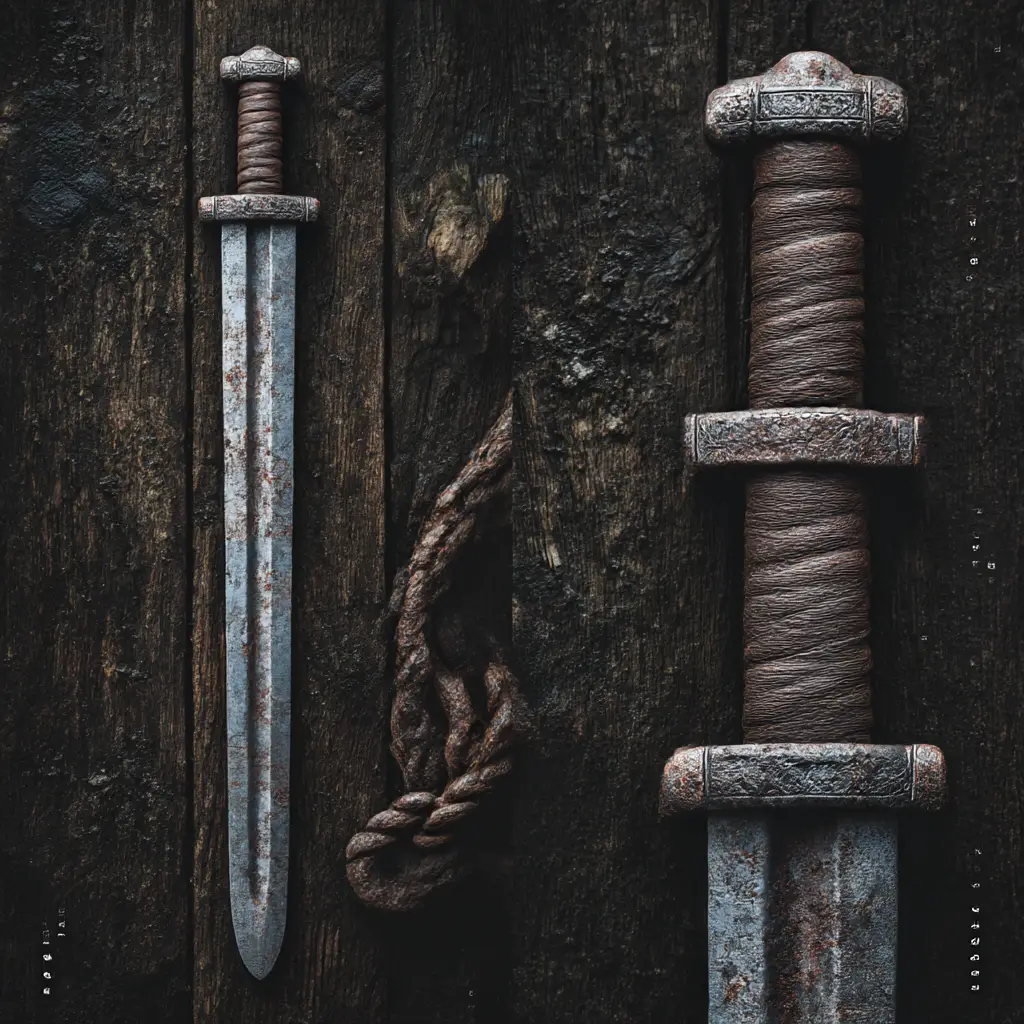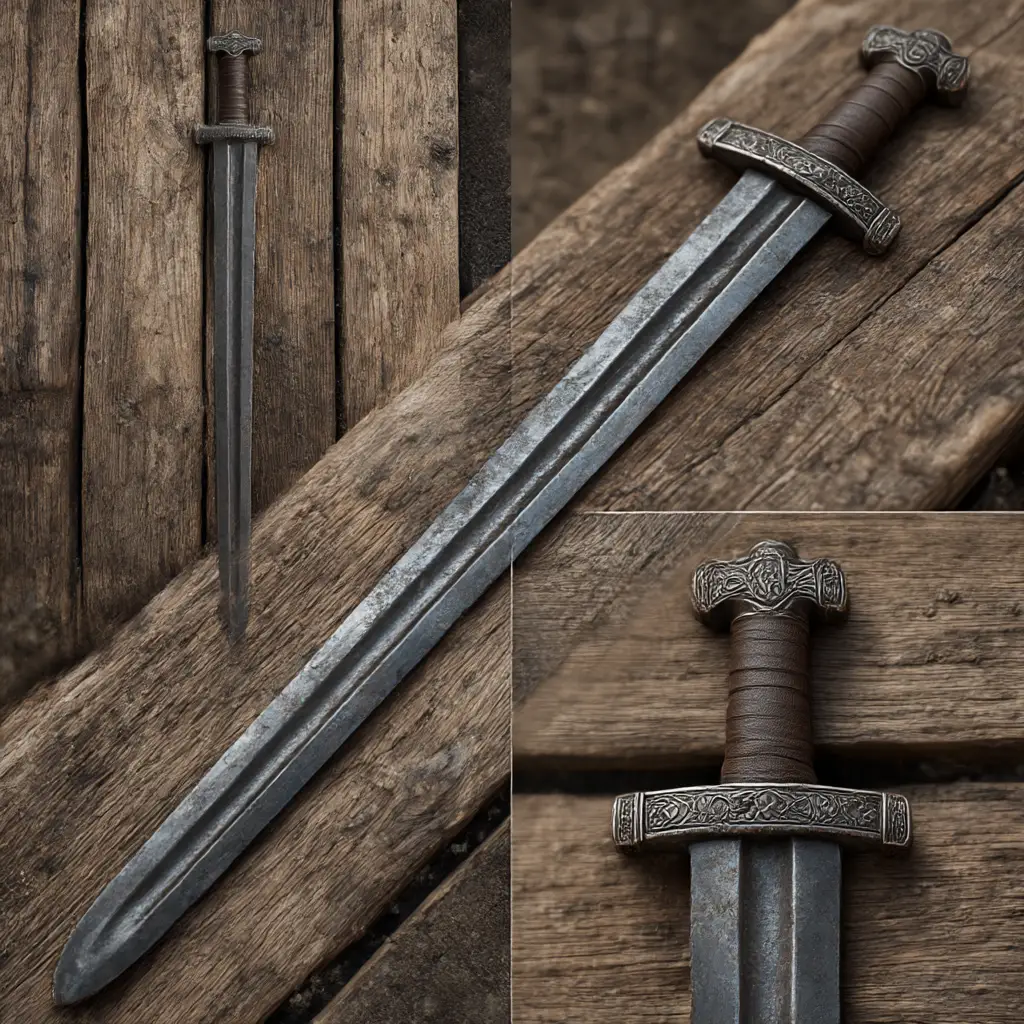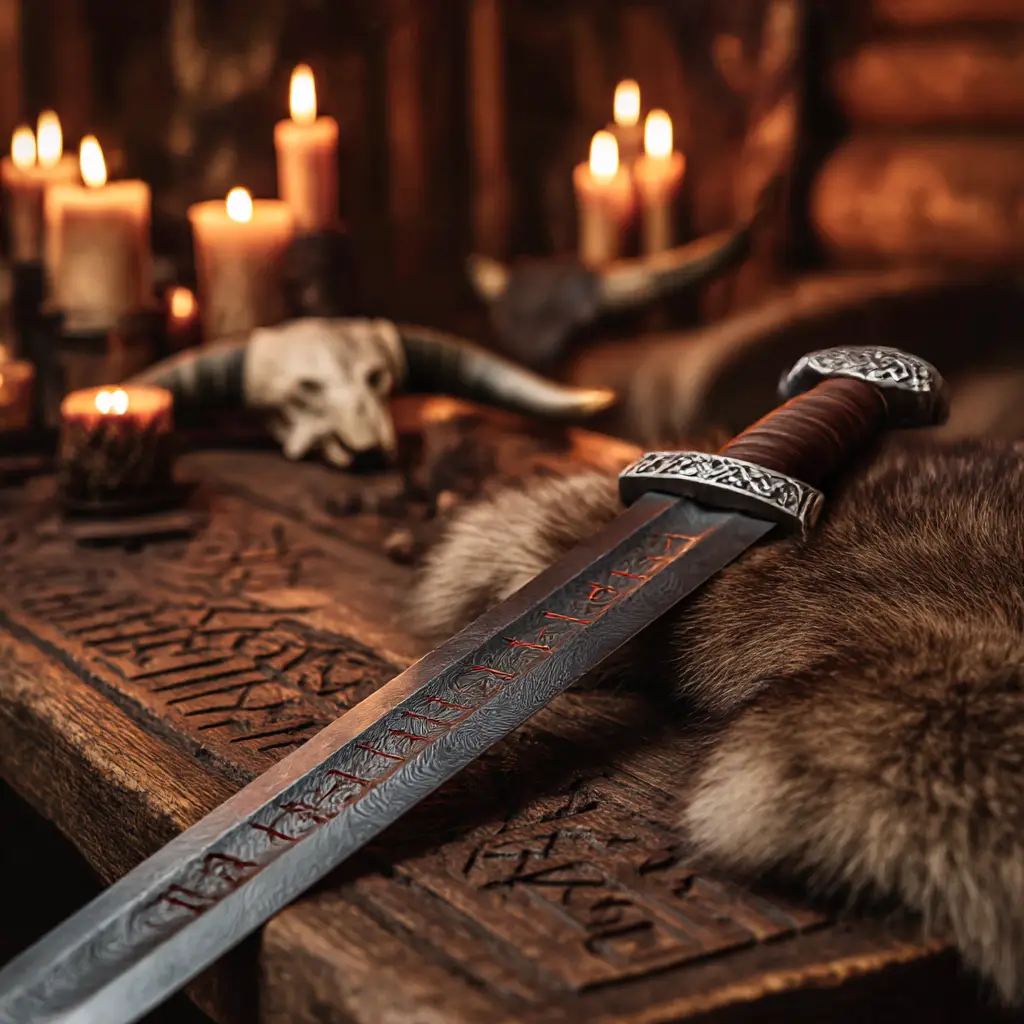The Viking Sword – Symbol of Power, Craft, and Prestige
The Viking sword is one of the most iconic weapons of the Norse world, representing more than just a tool for warfare. It was a symbol of honour, status, and craftsmanship. Used primarily during the Viking Age (circa 793–1066 AD), the sword held a special place in the hearts and legends of Viking warriors.
Design and Structure
Viking swords were typically double-edged and measured around 90–100 cm in length. The blades were straight, relatively broad, and designed for slashing rather than thrusting. Most swords were forged from pattern-welded iron – a technique involving the twisting and layering of metal to create strong, flexible blades with distinctive patterns along the surface.
The hilts (handles) were often short, allowing for one-handed use, and balanced by a large pommel that helped with control and balance. Hilts and guards were frequently decorated with intricate designs, using silver, copper, or bronze inlays. The pommel often followed geometric shapes or animal motifs, showing both regional and individual artistic variation.
Cultural Significance
Owning a sword was a mark of high status in Viking society. Swords were expensive to make and were often passed down from generation to generation. A warrior’s sword was more than a weapon – it was a companion in battle and a representation of his honour and legacy.
Many swords were given names, and these names often appeared in sagas and poetry. Names like Leg-biter or Blood-serpent added a mythic quality to these weapons. The belief in the sword’s soul and spirit was strong, and warriors might even be buried with their swords, symbolising their readiness for the afterlife.
Combat Use
Though Vikings used a range of weapons including axes, spears, and bows, the sword was favoured by the elite. In battle, it was used with precision and skill, typically in combination with a round shield. Sword fighting required both strength and agility, with techniques focused on fast, clean strikes and quick defence.
Unlike the heavy swords of later medieval knights, Viking swords were relatively light, agile, and well-suited to the dynamic combat styles of Norse warriors.
Inscriptions and Imported Blades
Some Viking swords bear inscriptions such as the famed Ulfberht mark. These were not Norse in origin but imported from the Frankish regions (modern-day France and Germany). Such swords were highly prized, suggesting a wide network of trade and contact between the Norse world and mainland Europe.
The presence of foreign blades also reveals the adaptability of Viking warriors – they were not just skilled raiders and fighters, but also keen traders and craftsmen who sought out the best materials available.
Today, Viking swords are among the most valued artefacts in museums and collections. Each sword offers insight into the society that produced it – a world where personal honour, warrior culture, and intricate artistry were deeply intertwined.
From the battlefield to the burial mound, the Viking sword stood as a powerful symbol of a people who carved their names into history with both steel and saga.



